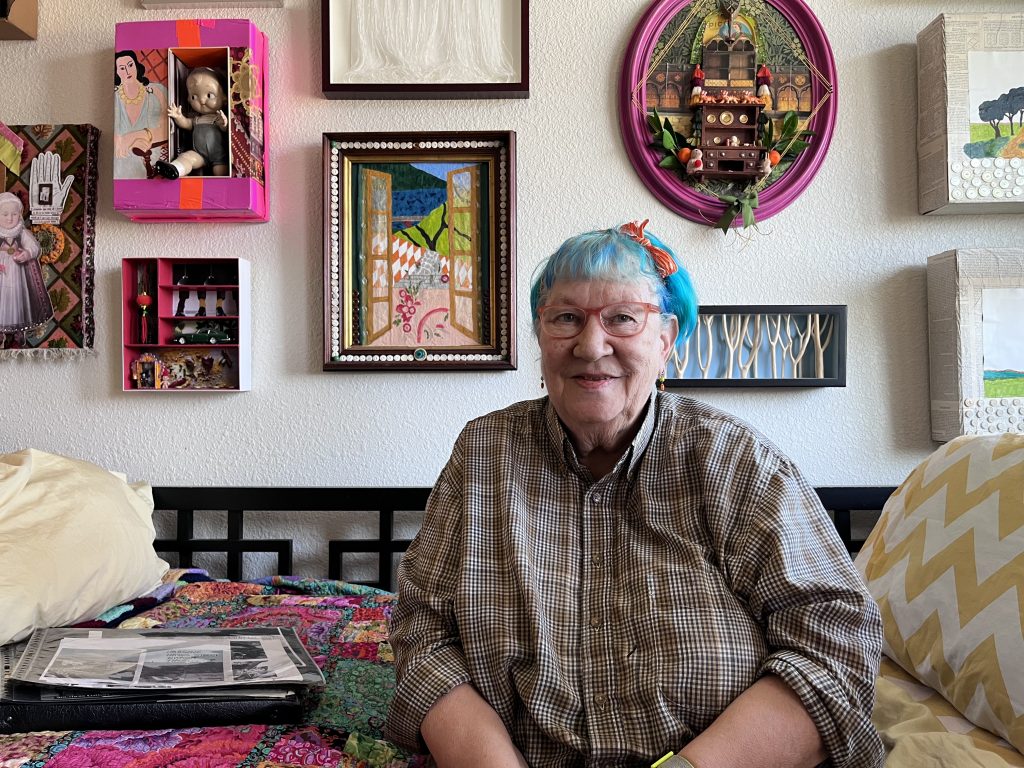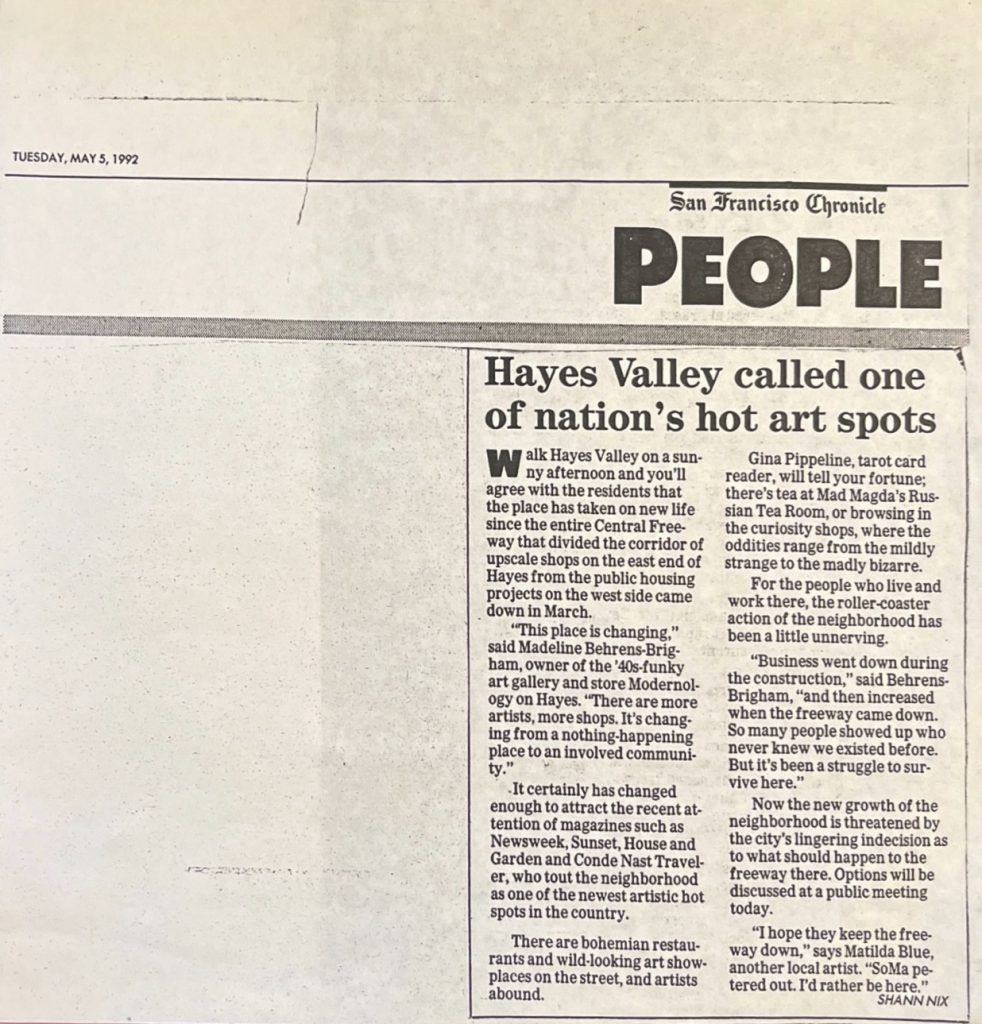
Madeline Behrens-Brigham is originally from a small town in Illinois and moved to the Bay Area as a young adult. After living in a few different apartments, she moved into a storefront on Hayes Street in 1990. Madeline lived in the back of the store and ran her design shop, Modernology, out of the front. Her store closed in 1993 because her shop wasn’t profitable enough to pay the bills, but she stayed in Hayes Valley, finding affordable spots to live where she could and remaining firmly rooted in the community of business owners.
Madeline was at the helm of the neighborhood effort to get the Hayes Valley section of the Central Freeway demolished. She also organized neighborhood block parties, fought to keep corporations out of the area, and was central in popularizing the name of Hayes Valley. In 2016, Madeline moved to Santa Rosa into low-income senior housing in response to rising rents in Hayes Valley.
In March of 2022, Madeline spoke to me about her years living and working on Hayes Street.
A Tight-Knit Community
“We had benches….later, the city enacted a law that you could not have benches outside your store. That was so homeless people wouldn’t sleep on them. Well, we wanted benches because we wanted people to come and sit down. And then as store owners who didn’t have a lot of customers, we would sit outside on our benches and talk to each other. So, that was sort of the trademark, that you put a bench outside your store…. And I’m still friends with most of those people.”
The Fight for Freeway Removal
“Slowly, we finally got the freeway torn down. The day it came down, I cried, because my store, which was a block and a half up, was in shadow. When the freeway came down, there was full sunshine on my store. It was so beautiful.”
“There was the pre-getting the freeway down and then post-freeway down. And that really opened things up. So that was probably the beginning of the end, in a way.”
The Buzz Begins
“Some [customers] were from the neighborhood, but more, we got noted as being a design area and we got written about. We were so lucky. And some of those clippings that you’ll see—there’s one that says Hayes Valley is the New Hot Spot or something like that. It got written about in a lot of the design magazines. And this one time, two women pulled up in front of my store and Russell’s store and these very elegantly dressed women got out with their suit cases out of the cab. And they—I don’t know if they came over to one of us and they said—they were holding the page out of the North California Home and Gardens or something that talked about the shops on Hayes Street. They came straight from the airport”

Gentrification and A Changing Culture
“I think 80% of that block, my 500 block, was owned by Hayes Valley Properties. And they then started getting really greedy. And they were subdividing–they’d subdivide even a one bedroom apartment and turn it into two studios just to make more money. And they really were not very kind.”
“Our main coffeeshop that we saved from going under because we got Starbucks out, where people really kind of gathered, that was kind of the neighborhood place, became a champagne bar. A champagne and caviar bar. I mean, and some of the coffee places that came in, I couldn’t afford to buy a coffee. So, that was when it was really sad.”
“People would often say, ‘Well, obviously, you gentrified the neighborhood.’ And Russell and I would both bristle, because we were very aware of that we hadn’t. Except now, I did say that, you know, the people who bought my building, I’m aware they moved Doris and Mose out.…But the rest of the buildings were mostly vacant. Boarded up, even. But mostly vacant except for the other side of the street that had a lot of the workshops in it, where people just came in, like the Korean painters. They would come in the morning and load up their equipment and come at night. We never saw them during the day….I called Russell and said, ‘Russell, what did we used to say instead of gentrifying?’ And he said, ‘Revitalization.’ So, that’s what we called it, because really, that’s what it was. Revitalizing a neighborhood. When it’s empty, that’s not gentrifying. Now, though…it has been gentrified. But, everything changes all the time.”
